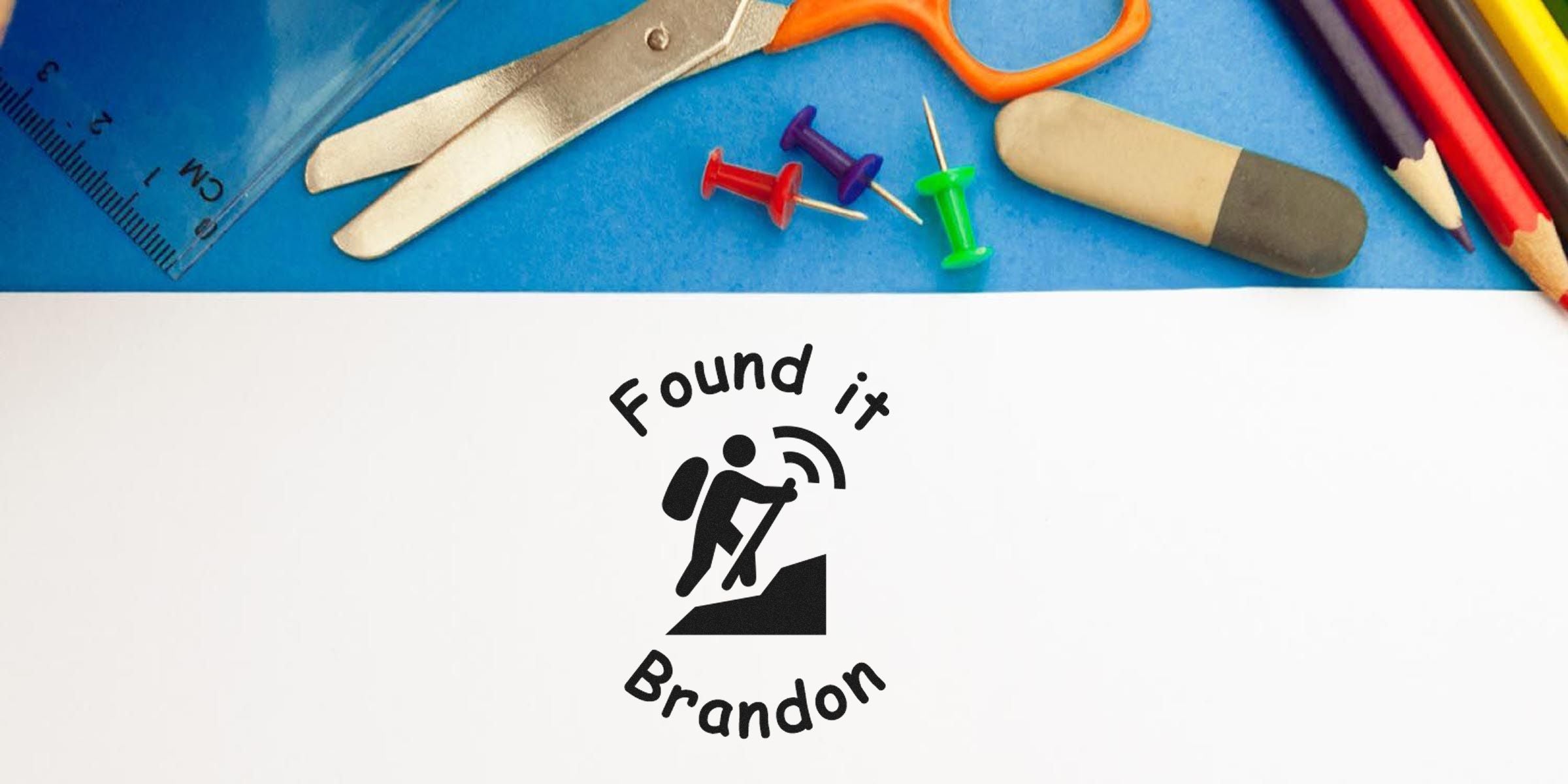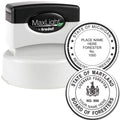Explore The Allure Of Geocaching Stamps
Imagine standing in a quiet park, carefully lifting a small container from beneath a rock. You open it to discover a logbook, trade items, and, of course, a space where countless adventurers have marked their visits with fun, personalized impressions. This simple yet delightful ritual is what makes geocaching so memorable. And that’s where geocaching stamps shine.
You’ve probably heard about leaving your unique “signature” in a cache, right? Instead of just scribbling your initials, you can use a custom rubber stamp that clearly states, “I was here!” Geocaching stamps are designed to commemorate your find in a creative, compact way. They leave a crisp imprint in the logbook, telling fellow explorers that you’ve tackled the challenge. Talk about a fun way to build your caching history.
In this guide, you’ll learn everything you need to know before picking out your own stamp. From understanding geocaching basics, to choosing the right materials, to exploring creative ways to use your stamp in the field, it’s all here in one friendly overview. If you’re new to the stamping world, don’t worry. By the time you finish reading, you’ll know exactly how to pick and care for a stamp that’s tailor-made for your adventures.
Above all, let this be your go-to reference whenever questions pop up. Ready to explore the entire process of selecting a custom geocaching stamp? Let’s jump in.
Learn Geocaching Essentials
Before you start designing your personal mark, let’s talk about what geocaching is and why stamps matter so much. Geocaching is essentially a global treasure hunt. Someone hides a cache container, records its GPS coordinates, then publishes them for others to seek and find. Each cache typically contains a logbook where visitors note their visit.
So where do stamps fit in? A stamp is the perfect way to leave a quick, legible impression in every logbook you encounter. Instead of rummaging for a pen or cramming your name in tiny spaces, you can press once and leave a neat mark. It’s faster, cleaner, and can reflect your personality with fun icons or text.
When you’re out searching for a cache, you often have limited space in your kit. Stamps take up minimal room. They’re also wallet-friendly in the long run because there’s no need to replace your signature sticker or carry a bunch of markers. With a trusty ink pad (or even a self-inking style) plus your custom design, you can stamp at least a few hundred times with ease.
Another essential part of geocaching is logging your visits online afterward. People love to see who discovered their caches. Once you’ve made your stamp imprint in the physical log, you can head online and share the story of your find. This combination of offline and online interaction is what makes geocaching such a vibrant hobby. Your geocaching toolset can be as large or as minimal as you like, but almost every passionate cacher carries some form of personalized stamp.
Consider Customization Benefits
Why go custom instead of grabbing a generic off-the-shelf design? Personalizing your stamp lets you stand out from the crowd. You can add your caching nickname, a small graphic that matches your style, or a playful phrase. It’s about leaving a real piece of your identity with every cache you conquer.
A custom design also helps other geocachers remember you. There are so many logs in popular cache spots that it can quickly become a sea of scribbles. A unique image or clever text can grab attention and spark friendly interactions. You might find yourself connecting with other stamp-loving cachers in online forums, forming new friendships based on shared creative flair.
Plus, a personalized stamp makes your hobby feel more official. It’s a simple item that boosts your confidence, as if saying, “I’m truly part of the geocaching community.” It can also serve as a conversation starter if you’re caching with friends or meeting fellow explorers. Curious about your stamp, they might ask how you designed it, where you got it, or how often you update it.
Here’s another reason: geocaching is an all-weather, all-terrain adventure. You might be trekking through forests, hills, or city streets. A rugged custom stamp, designed to your specs, can handle the bumpiness of real-world exploration. If you’re investing your time in geocaching, it’s worth investing in a high-quality mark that stays crisp and legible, no matter how many logs you collect.
Choose Ideal Size And Shape
Once you decide to go custom, the first nitty-gritty detail is figuring out size and shape. Most geocaching logbooks aren’t huge, and some are truly teeny-tiny, especially in micro or nano caches. So, sizing your stamp correctly is crucial to make sure it fits in logbooks without overlapping other people’s impressions.
- Micro caches: Often, you’ll encounter micro or even nano caches which have tiny rolled log strips. For these, a super-small stamp around half an inch or less might be your best bet.
- Regular caches: For the majority of standard-size caches, something around one to two inches in width is common. This size is easy to see and easy to place without taking up too much space in the logbook.
- Custom shapes: Squares, rectangles, and circles are the most common. However, if you want something that really stands out, custom shapes like hexagons or quirky outlines can add an extra dash of flair.
When deciding, think about how often you run into ultra-micro caches versus standard ones. You could opt for two small stamps: one for the smallest logs, another for bigger logs. Or pick a compact shape that works in nearly every scenario. Keep in mind that a smaller stamp means less room for text or images, but it can fit more universally.
Having the right shape and size means each time you flip open a logbook, you won’t have to worry about whether your design can squeeze into the space available. It also shows consideration toward fellow cachers, because you’re not hogging precious log space.
Pick Quality Materials
The next step is deciding which materials suit your style. Most geocaching stamps are made of durable rubber, because rubber picks up ink well and offers clear, lasting impressions. The handle might be plastic or wood, or you could go for a self-inking model that hides an ink pad inside. Here’s a quick comparison table to help you see the benefits of various types:
| Stamp Type | Pros | Cons |
|---|---|---|
| Traditional Rubber Stamp + Wood Handle | - Classic look and feel - Often cheaper - Easy to replace handles or rubber only | - Requires separate ink pad - Might be bulkier to store |
| Self-Inking Stamp | - Portable with built-in pad - Quick and clean impressions - Ink often lasts hundreds of uses | - Limited color options - Refills can be brand-specific |
| Pre-Inked Stamp | - Super crisp detail - Great for high-volume stamping - Generally no rubber ridges | - Typically pricier - Ink refill might be specialized |
Rubber is a reliable choice for the design surface. It typically stands up well to different weather conditions. You’ll also want to pick an ink formula that matches your environment. Some cachers prefer waterproof or quick-drying inks to guard against smudging. If you’re stamping in damp or rainy places, consider carrying a small cloth to blot the page or protect your newly stamped image.
You should also think about the handle’s comfort. Wood handles give an old-school charm but can be heavier than plastic. Some self-inking stamps have a compact, pocket-sized design that’s easy to toss in your daypack. Ultimately, pick what fits your budget and your caching style best.
Spot Key Stamp Features
Any old stamp can put ink on paper, but a great geocaching stamp has a few extra touches that truly elevate the experience. Here are some features to keep on your radar:
- Text Clarity
You want a font that remains readable at smaller sizes. If your geocaching name is more than a few letters, consider a layout that balances text and any graphics you choose. - Distinctive Graphic
A tiny image or unique symbol can make your mark pop. It could be a compass, mountain silhouette, or a quirky mascot that represents you. If you don’t have a specific image in mind, pick something that’s easy to recognize even in a small print area. - Border or Outline
Using a thin border around your design helps separate your mark from others on the page. It also keeps the ink from smudging into other impressions. - Durability
Look for stamps made of high-grade materials that won’t degrade after repeated use. If you go with self-inking, check that replacement ink cartridges or pads are easy to find. - Ease of Maintenance
Some stamps require occasional cleaning or re-inking. Make sure you’re comfortable with the steps needed to keep your stamp crisp and reliable for the long haul.
With these features in mind, you significantly reduce the chance of regrets once you start stamping in the wild. The right mix of clarity, design flair, and durability gives your stamp that perfect sweet spot.
Order From ESS Effortlessly
Now that you know what to look for, let’s discuss how to actually place an order with a trusted supplier. Having a reliable provider can make a huge difference, especially when you want a stamp that’s accurate and arrives quickly. That’s where ESS steps up to the plate.
ESS is one of the top suppliers for geocaching stamps, geocaching log stamps, and various geocaching gifts. They’re family-owned and operated since 1964, with 60 years of service under their belt. In other words, they’ve been perfecting the art of stamps for quite a while. Their core values revolve around giving you top-quality products with excellent customer service, plus super fast turnaround times. That means if you want your stamp sooner rather than later, you’re in good hands.
When you visit ESS, you’ll find an array of custom design options. You can select your stamp type (traditional, self-inking, or pre-inked), size, shape, and even specific ink color. If you have a unique logo or icon in mind, simply share the design file. Looking for something whimsical or a basic text-based approach? They can handle that too. Rest assured, if you’re envisioning a unique geocaching stamp that showcases your personality, ESS can bring it to life.
Here’s typically what the ordering process looks like:
- Choose Your Stamp
Decide if you want a smaller or larger imprint, plus any special inks. - Submit Your Design
Upload your custom logo, or pick from ESS’s design library if you’re unsure. - Preview And Approve
They’ll provide a digital proof for your green light. Once you’re happy, you finalize the order. - Wait For Delivery
Because of their quick turnaround, you’ll soon be stamping logs on your next geocaching adventure.
With ESS covering all the bases, you can focus on the fun part of the hobby: exploring caches, collecting memories, and leaving your mark.
Use Your Stamp Creatively
A stamp doesn’t have to be limited to a single impression in a logbook. You can get a lot more creative and make each adventure unique. If you enjoy making social media posts about your geocaching triumphs, you could stamp your personal journal at home, then snap a photo of it for your feed. Or you could maintain a travel scrapbook where each stamp impression is a record of your journeys.
Some cachers even design small “achievement stamps” to mark special milestones, like their 100th or 500th find. Instead of writing “Found my 100th cache,” you could whip out a celebratory design featuring that milestone number. It adds a layer of excitement and reflection to your personal records.
Here are more fun ways to expand your stamp’s uses:
- Stickers And Tags
You can pre-stamp blank stickers or tags at home, so you have quick peel-and-stick labels for caches that may have soggy or limited log space. - Cache Swag
Place a laminated card or small token in caches, each stamped with your personal mark. Other finders might enjoy the unique collectible. - Postcards
If you befriend folks you meet along the way, mail them a postcard featuring your stamp. It’s an unexpected treat that strengthens caching friendships.
Using your stamp in multiple ways helps you appreciate the design you chose. After all, you spent time making it something special, so give it a chance to shine beyond just the cache log.
Maintain And Store Properly
Once you’ve purchased or designed a fantastic stamp, you’ll want to keep it in good shape. Proper care ensures crisp impressions, even after hundreds of uses. Start by storing your stamp in a small protective case or sealed pouch. That way, dirt, moisture, and debris from your caching trips won’t cling to the rubber surface.
If you notice ink buildup, gently clean the rubber area with a mild stamp cleaner or a touch of soapy water. Avoid harsh chemicals that could damage the design. After cleaning, blot it dry with a soft cloth. The key is to keep the raised surface free of dried-up ink or small particles that could distort your imprint.
Maintaining any inking components is also crucial. If you’re using a self-inking or pre-inked style, follow the brand’s instructions for adding ink. Use an ink formula that’s compatible with your stamp to avoid clogs or dryness. For a traditional rubber stamp, periodically replace your ink pad if you notice faint or inconsistent impressions.
Finally, think about weather-proofing your kit. You might be caching in the rain, snow, or heat. Stashing your stamp in a resealable plastic bag can keep moisture from attacking the rubber or handle. When your trip ends, allow the stamp to air out at home, especially if it’s damp. That simple step can prevent mold or material wear.
A well-maintained stamp remains your best caching companion for years to come. It’s worth spending a few minutes after each adventure to wipe it clean and store it safely.
Address Popular FAQs
Below are four frequently asked questions, each designed to help you navigate stamp selection and care. Use these quick-fire answers to guide your next steps.
What Size Stamp Works Best For Micro Logs?
Ultra-small logs, particularly in micro or nano caches, often have extremely tight spaces. Aim for a stamp no larger than about half an inch wide. This tiny size keeps your impression legible while saving room for future loggers.How Long Does A Typical Custom Stamp Last?
With proper care, a rubber stamp can last for several years. It depends on your usage and environment. People who cache weekly may replace theirs sooner than casual cachers who might only need light re-inking. Regular cleaning and cautious storage can easily add to your stamp’s longevity.Are There Specific Inks For Outdoor Use?
Yes. Many cachers prefer fast-drying, waterproof inks to guard against smudges. Some even opt for archival-quality ink to ensure their mark remains clear in humid or rainy conditions. If you’re using a self-inking model, look for specialized all-weather refills or cartridges.Can I Get A Digital Proof Before Finalizing My Order?
Absolutely, especially if you order through a reputable vendor like ESS. Most suppliers provide a digital layout of your design so you can confirm details and make any tweaks before production. It’s the best way to avoid surprises after your stamp is made.
By now, you should feel much more confident about choosing, customizing, and looking after a geocaching stamp. Whether you’re just getting started or ready to replace your worn-out gear, a reliable stamp doesn’t just enhance your log entries, it upgrades your entire caching experience. Happy stamping, and here’s to many memorable finds ahead!


















